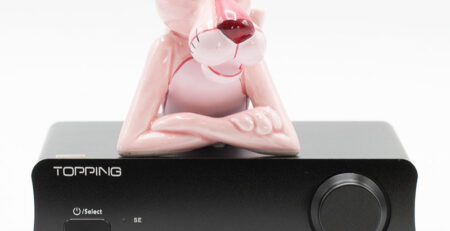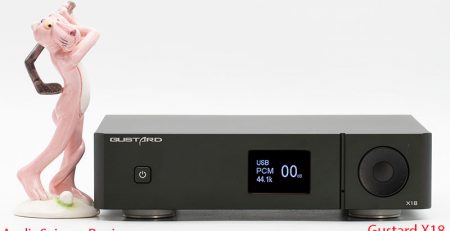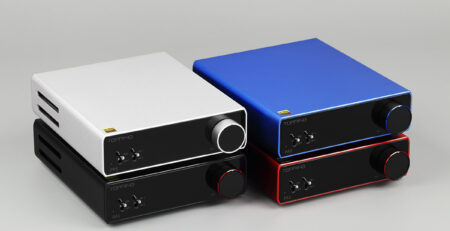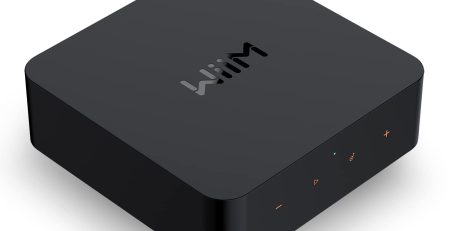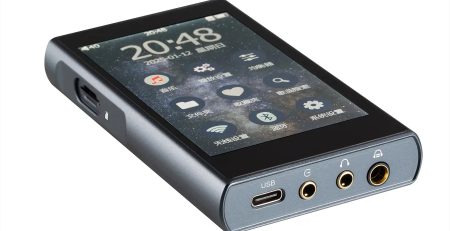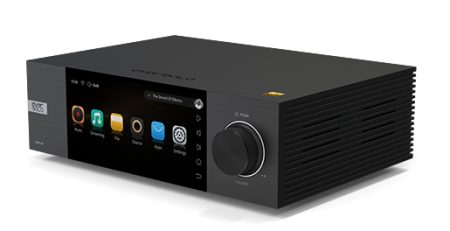Topping TOPPING DX5 REVIEW Headfonia
TOPPING DX5 REVIEW
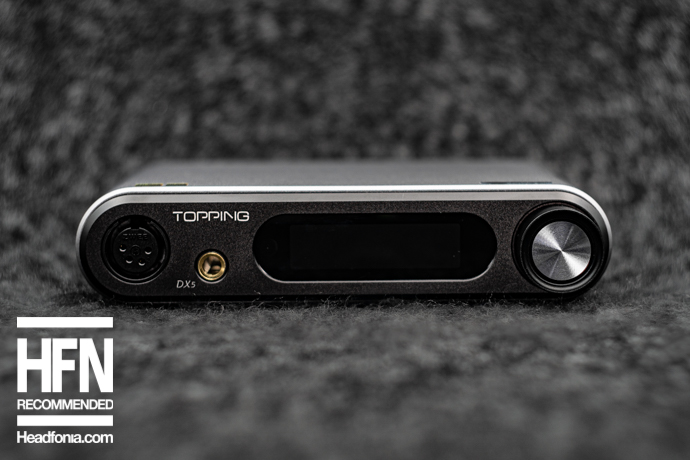
Bluetooth Capability
The DX5 comes equipped with Qualcomm’s QCC5125 Bluetooth 5 chipset. The QCC5125 supports AAC, SBC, AptX, AptX LL, AptX HD, and LDAC. LDAC is far superior to other codecs, capable of streaming 990kpbs and if you have an Android device, there is a good possibility that it supports LDAC streaming. Note that Apple devices do not support LDAC or aptX codecs and are only capable of AAC.
For the absolute best wireless sound quality, Topping states that they bypassed the built-in decoder of the QCC5125 and connected it directly to the 9068s. As usual, I’ve done my tests with my Android 12 smartphone. The process pairing process was quite straightforward and hassle-free. My phone detected the LDAC codec immediately and was ready to stream. We’ll talk more about the sound, soon.
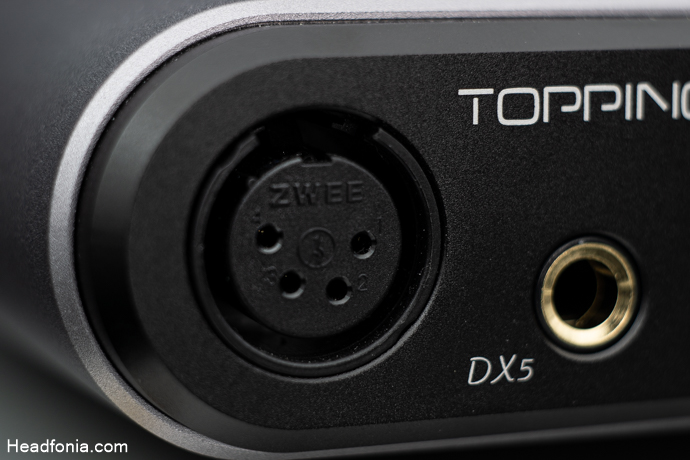
Sound
DX5-3-7-10-25… Confusing right?
Yes, we have almost reached the limits of what components can offer. After this point, the things that will help you decide which equipment to buy are other aspects, rather than sound. Especially in the last six months, companies such as SMSL, Topping, Sabaj, and Loxjie have managed to produce high-performance DACs with transparent, detailed, neutral sound, and these companies know very well that the purpose of a DAC is to transmit and convey the track without colorizing or saturating it. Although the price fluctuates between products, the law of diminishing returns is at play here, now more than ever.
Let’s talk about the DX5’s signature. The unit has two 9068AS DACs and like most of the 9068 equipped DACs in my inventory, it sounds clean, transparent, and resolving right out of the box. The NFCA amp module is also a very clean module with no added warmth so what I get from DX5 is a very flat, reference-like signature with impressive resolution and clarity.
We will be comparing the DX5 to several new DACs in the next chapter and you will have a better understanding of its position on the ladder. Additionally, I compared its DAC stage to its DAC+AMP stage and found no difference whatsoever. I conducted all of my tests through 4-pin XLR HPO and XLR BAL outputs on the back. Let’s take a closer look.
Low
The DX5 has a very clean, fast, dynamic, and impactful bass response. The DACs reflect your equipment as is and while I was testing it with the Hifiman’s R9, my ears experienced impactful, authoritative, punchy bass response with a thick texture. Combining it with a Tribrid resulted in a much faster, quantitatively smaller but faster bass presentation. The signature changes, yes, but the technical proficiency of the DX5 persist, no matter what you pair it with. The DX5 is a technical marvel, in many ways it is the perfect DAC if you’re after the colorless, flat flavor. Compared to the EX5, the DX5 feels subtly faster and tighter, around the sub-bass region.
Mid
As you would expect from a top-tier DAC configuration and a well-done implementation, the midrange of the DX5 sounds stellar. The vocals are clean, articulate, and detailed. The timbre feels neutral without coloration or saturation. Pairing the unit with the Deva gets you very clean, transparent vocals with plenty of air. The stage feels wide and the vocals are perfectly centered. The instruments are scattered across the stage with ample air between them, creating a uniform but spacious sense of soundstage. Pairing the DX5 with the R9 gets us a very musical, warm midrange with a thicker note weight. The soundstage feels closer to you compared to the Deva and the DAC reflects both of the headphones as is, doing its job very well. The whole midrange shows great control, no matter what I pair it with, the DX5 is never sibilant, unnecessarily harsh, or bright. The DX5 performs superbly when paired with my active monitors as well.
High
The DX5 is very clean. It has a brilliant treble extension, resolution, and clarity. It is a very capable DAC and I have absolutely nothing else to add to that. The unit’s technical finesse ensures great control over the spectrum. You won’t be experiencing any sharp edges, sibilance, or shrill if you pair it with an equally capable headphone. Even $139 USD Sennheiser & Drop’s 58X sound amazing when paired with the DX5. The DX5 successfully improves the technical capability while maintaining the core signature of the 58X. The transients are fast, agile, and clean. Overall, great top-end performance, similar to the rest of the spectrum.
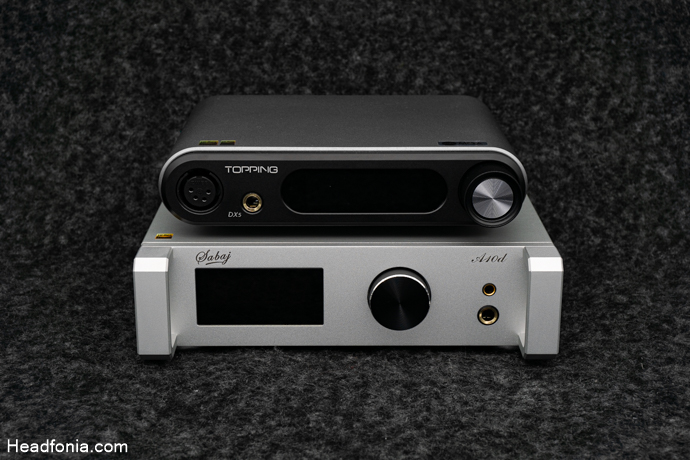
Technical Capability & Wireless Performance
The DX5 is a technically advanced DAC. I can easily say that the DX5 is one of the best dacs I’ve ever heard on my audiophile journey. It offers fantastic PRaT and dynamism. It features a wide soundstage with ample space between instruments. It offers precise positioning of instruments, a colorless approach to the sound and it has a clean, realistic timbre. The separation and layering are great as you would expect. Pair it with a decent headphone or an IEM, and you’ve got yourself a killer combo. As I mentioned before, even the 58X performs outstandingly with the DX5. If you are after a more colorless approach, you might want to buy the 560S instead. The 560S & DX5 pair is as flat as it gets without breaking the bank. If you already have an EX5 and are currently happy with it, there is no real reason to upgrade to DX5 other than a few technical and nuanced differences so don’t worry about it. We’ll talk about other units in the upcoming section.
As for the wireless performance, I tested the unit extensively in pure DAC mode and HP mode using both my reference monitors and portable inventory. I streamed Qobuz and Tidal via the LDAC codec and I was very impressed by the sound quality. The wireless/wired gap is closing each passing day and we might have truly lossless wireless devices soon. The sound quality was very good, so good that I couldn’t hear the difference between wired and wireless using my reference monitors. I switched to my Monarch MK2 and the difference got clearer. The wired DX5 sounds more detailed and technically superior. However, the difference was not huge and if you are looking for a DAC to use LDAC extensively, I think the DX5 could be your endgame until ESS or AKM raises the bar even higher.
Comparisons
vs. Sabaj A10D 2022 ($300 USD)
The A10D is a new all-in-one DAC & AMP from Sabaj company. It utilizes dual ES9038Q2M DAC chips accompanied by x4 OPA1612s. It is a configuration that we are very much acquainted with. The device comes with extensive Bluetooth support, including LDAC and aptX HD. It also has a UAC1 mode for TVs and consoles. As for power delivery, the device is capable of delivering 1 watt of power into a 32-ohm load. It comes with two gain settings, 0dB and +10dB. Size-wise it is both bigger and heavier than the D40 and DX5. The DX5 offers more power and has a slightly better DAC chip inside. As for the sound quality, I would put the A10D between the DX5/D40 and the DX3 Pro+. If we directly compare DX5 and the A10D, the DX5 offer slightly better PRaT, a slightly wider stage, and better separation.
vs. Loxjie D40 ($430 USD)
Loxjie’s D40 is a serious contender in this price bracket. The D40 offers the same chip that Topping used in the DX5, ESS Technology’s ES9068AS in dual configuration. As for the AMP stage, the D40 also uses a similar architecture compared to the DX5 and also comes with Bluetooth 5 support, including LDAC and AptX HD. The D40 does not offer an XLR 4-pin out on the front panel, however, it has richer I/O options compared to the DX5. The downside is its size. It is bigger and heavier than the DX5. Although subjective, I think the DX5 look better than both of its current rivals. The D40 uses OPA1612-based PFLC amp circuitry with similar power specs. Both of the units are more alike than different so it’s all down to the features and I/O options. Sound-wise the D40’s upper mids sound a tad more energetic to my ears and that’s pretty much all that I heard during my 4-hour A/B session between them. Both of them are solid units, go for the one you like the most.
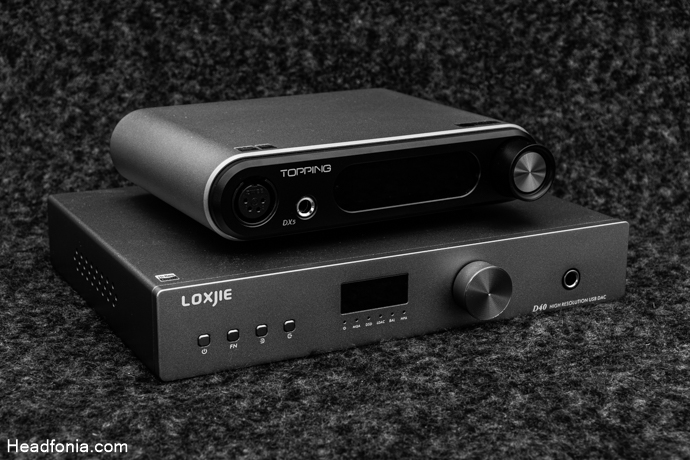
Conclusion
Topping is, well, utterly unstoppable at this point. I can say that DX5 offers one of the most beautiful designs among high-performance DACs. Topping’s decision to renew and update design lines and packaging was quite appropriate. Frankly, I think that a company that produces such successful products should have aesthetic concerns. The DX5 is a step in the right direction. If you need a capable, technically advanced all-in-one device, you can go for the DX5 with peace of mind.
It replaces EX5 with its great design, very good performance, and extensive feature list, earning the HFN Recommendation Award from us!



